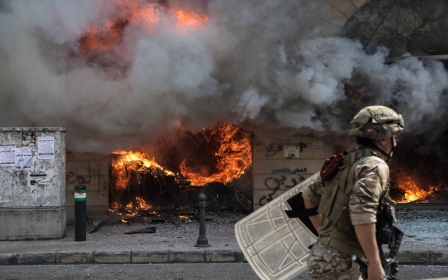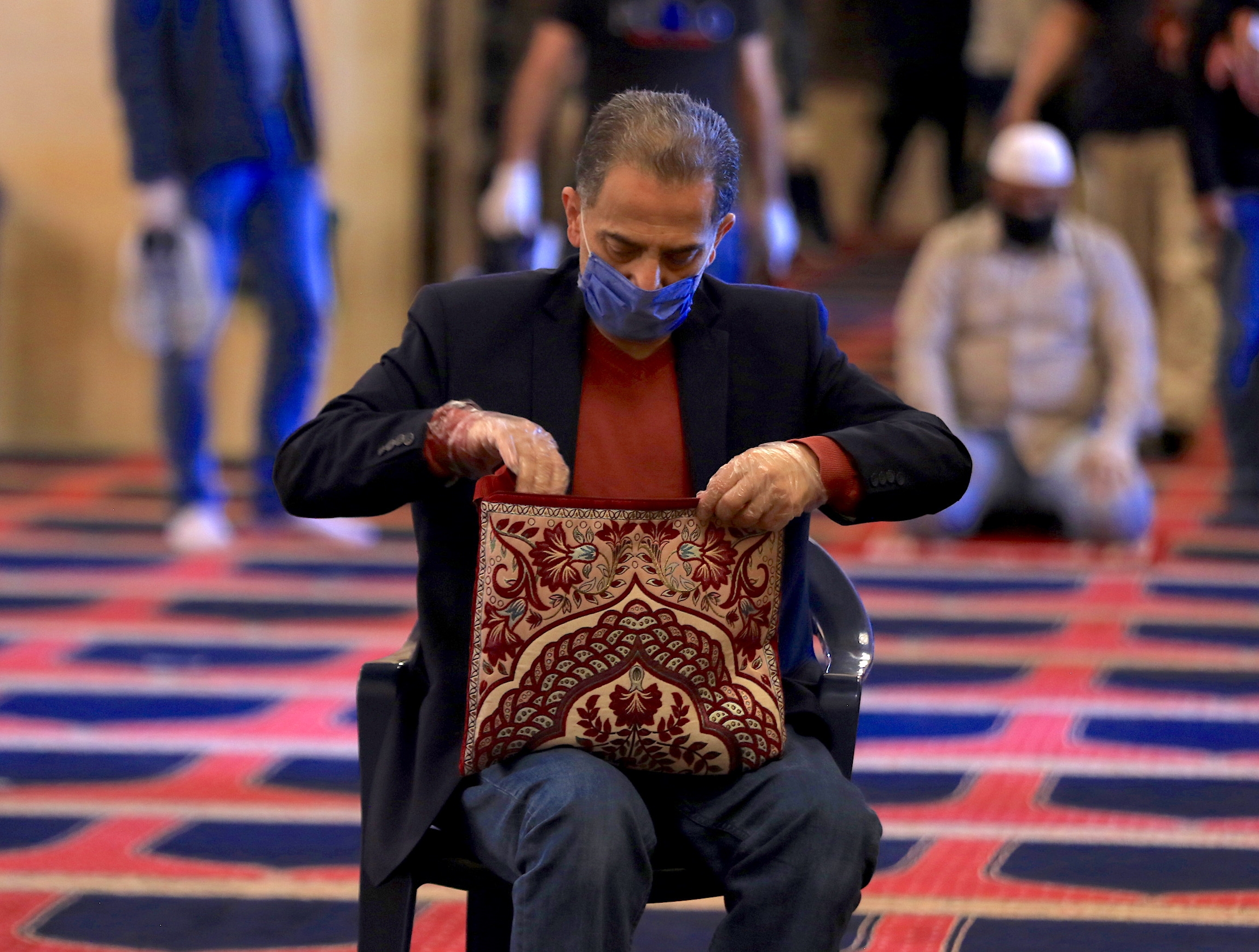
In pictures: Worshippers return after Lebanon relaxes coronavirus measures

After nearly two months of closure, Lebanon's mosques and churches are welcoming back workshippers for Friday prayers and Sunday mass, as the country slowly loosens measures imposed to contain the spread of coronavirus.
Lebanese Interior Minister Mohammed Fahmy has announced that beginning from 8 May, places of worship can reopen to the general public, provided that the number of worshippers does not exceed 30 percent of the capacity of each mosque or church, and sanitary conditions and preventive measures are adhered to.
This photo shows worshippers attending the Sunday mass at St Demetrios Greek Orthodox Church in Beirut on 10 May. The church had asked parishioners to sit three to a bench to comply with the government's social distancing guidance. (MEE/Michal Kranz)

A boy scout stands outside the entrance of St Demetrios Greek Orthodox Church offering worshippers hand sanitizer before Sunday mass. Parishioners were asked to disinfect their hands before entering. More boy scouts were inside the church, enforcing social distancing rules as worshippers lined up to take holy communion during mass. (MEE/Michal Kranz)
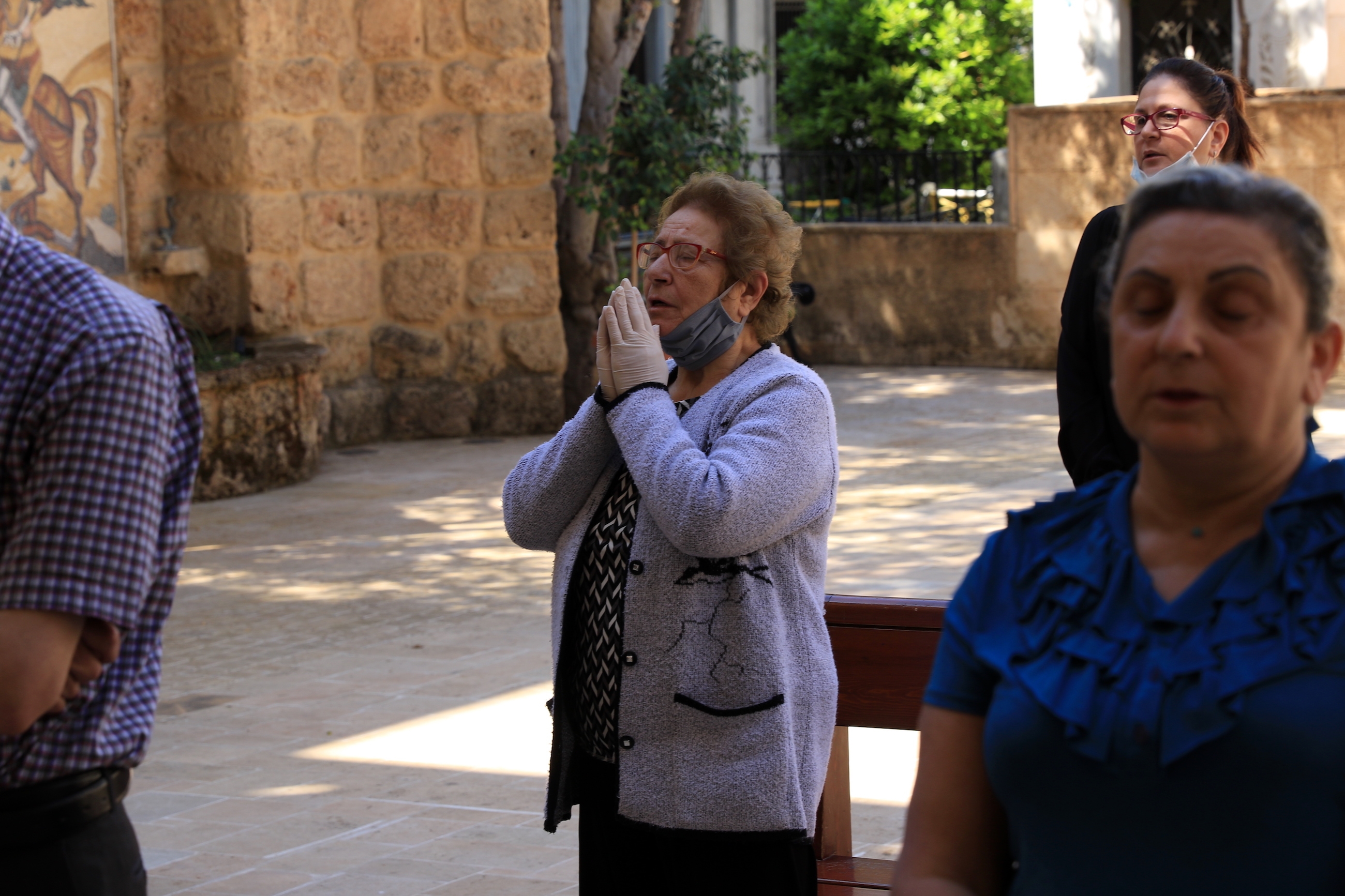
A woman prays in front of St Demetrios Greek Orthodox Church in Beirut, where pews were set up outside to avoid overcrowding inside. As more Lebanese step out of their homes and into mosques and churches - which had been closed since 15 March - Lebanese authorities on Monday warned of a new wave of coronavirus cases, after the number jumped to its highest point in more than a month as the government eases some restrictions on public life. (MEE/Michal Kranz)

While women, children and the elderly were barred from attending Friday prayers at mosques on 8 May, here at Mohammad al-Amine Mosque in Downtown Beirut, men prayed while observing social distancing rules. Lebanon has been under lockdown since mid-March to rein in an outbreak that has infected 859 people and killed 26. (MEE/Michal Kranz)
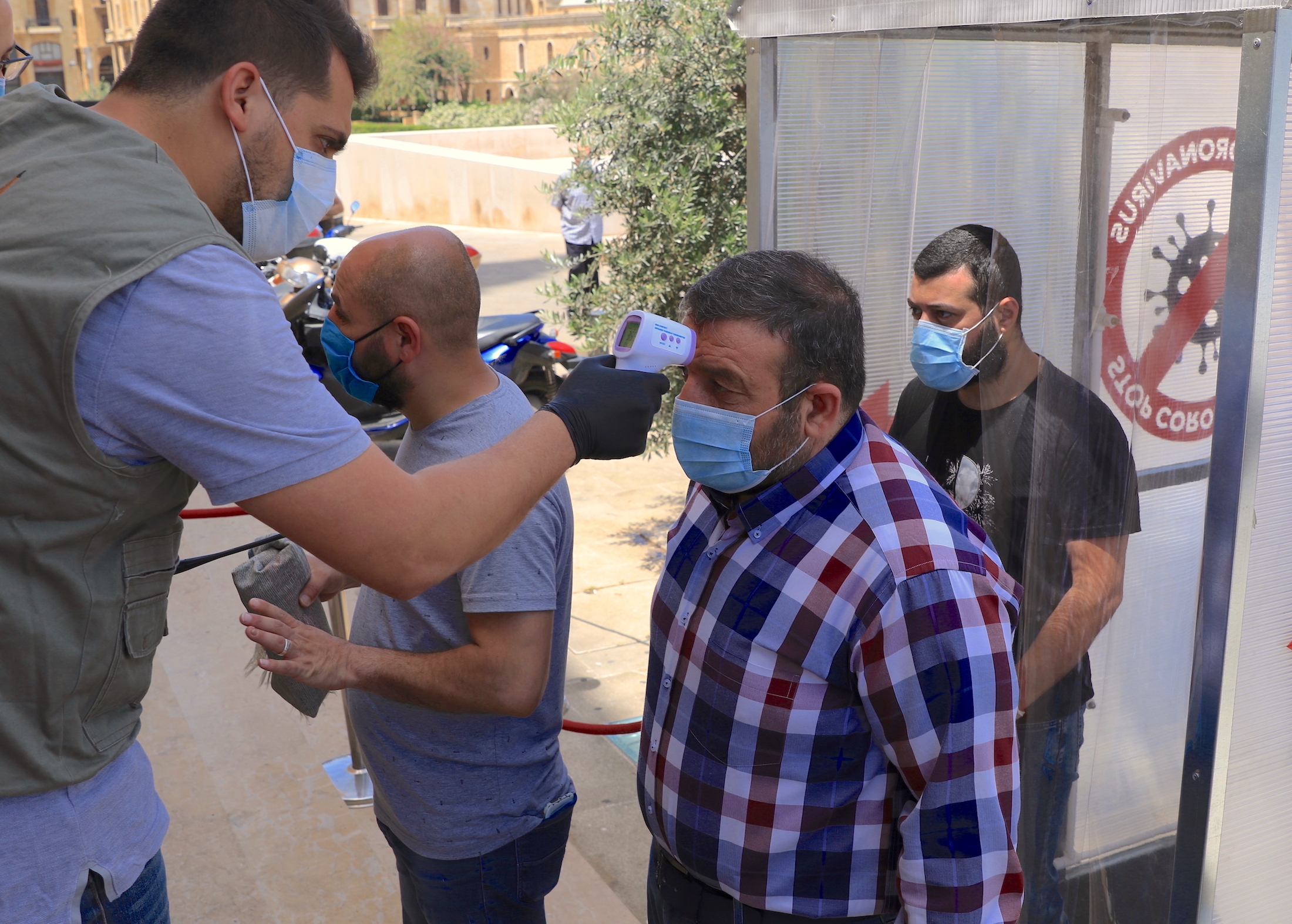
Prior to entering the mosque, all attendees have to walk through a passageway with disinfecting mist, and have their temperatures taken. They are also required to wear masks and bring their own prayer mats.
The country has adopted a five-step exit plan to get life back to normalcy. Just last week it moved into the the second phase of easing lockdown, allowing restaurants to operate at a 30 percent capacity, and hair salons, playgrounds and mechanics to open during the day. But the government may shut the country down again to ward off any resurgence, with Lebanon’s Higher Defence Council set to convene on Tuesday. (MEE/Michal Kranz)

A man praying at Mohammad al-Amine Mosque on 8 May. Pieces of tape on the carpet around him indicate where worshippers should place their mats to maintain distance from one another. (MEE/Michal Kranz)

Worshippers at Beirut's St Joseph Maronite Catholic Church were greeted with signs reading “Please sit here", instructing them to sit two to a pew. Masks were required at the church for Sunday's mass. (MEE/Michal Kranz)
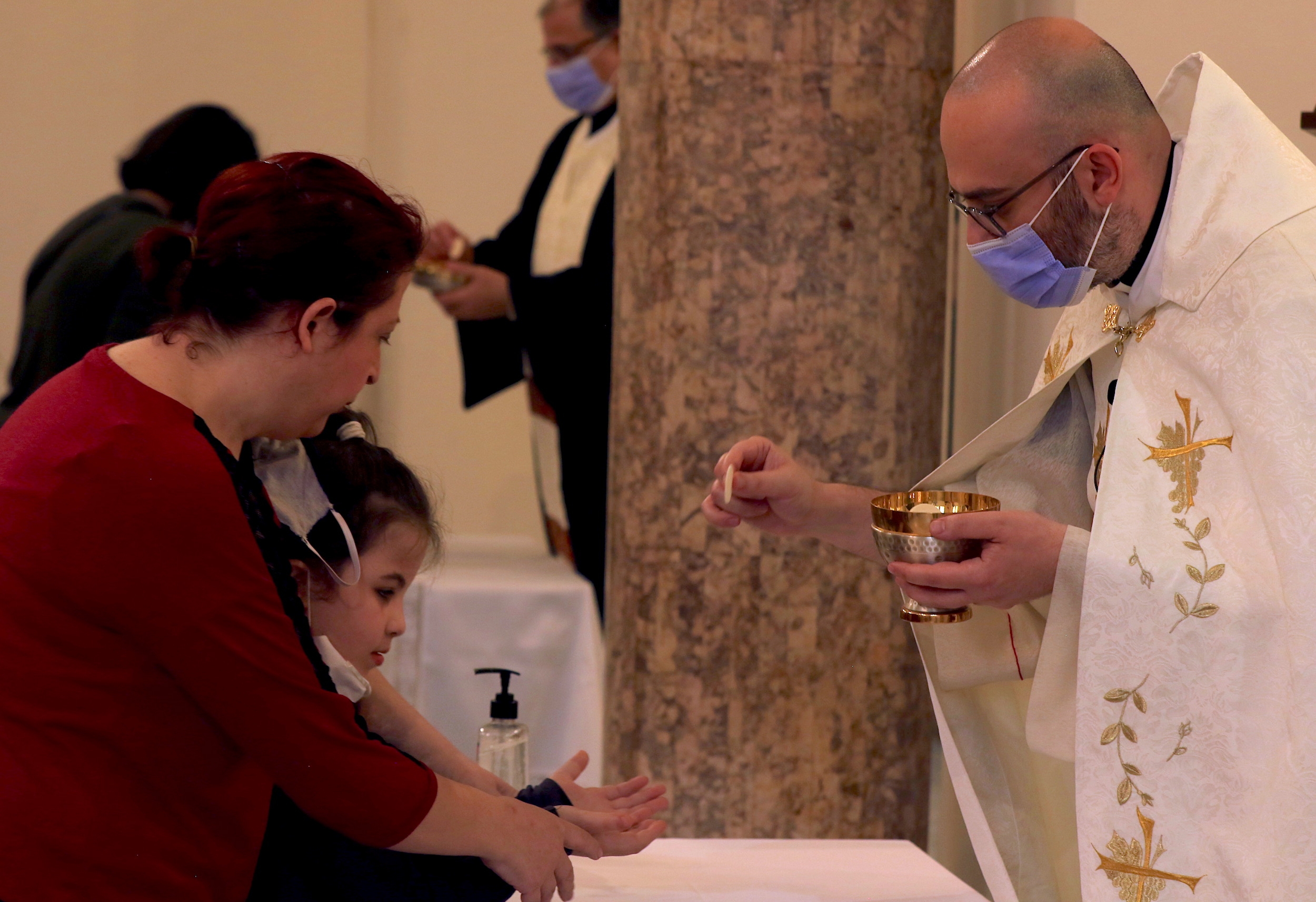
In a break with tradition, Father Jad Chlouk hands a holy communion wafer to a woman and her daughter after disinfecting his hands with sanitizer. Normally, the wafer would be placed directly into the mouth of the receiver. (MEE/Michal Kranz)
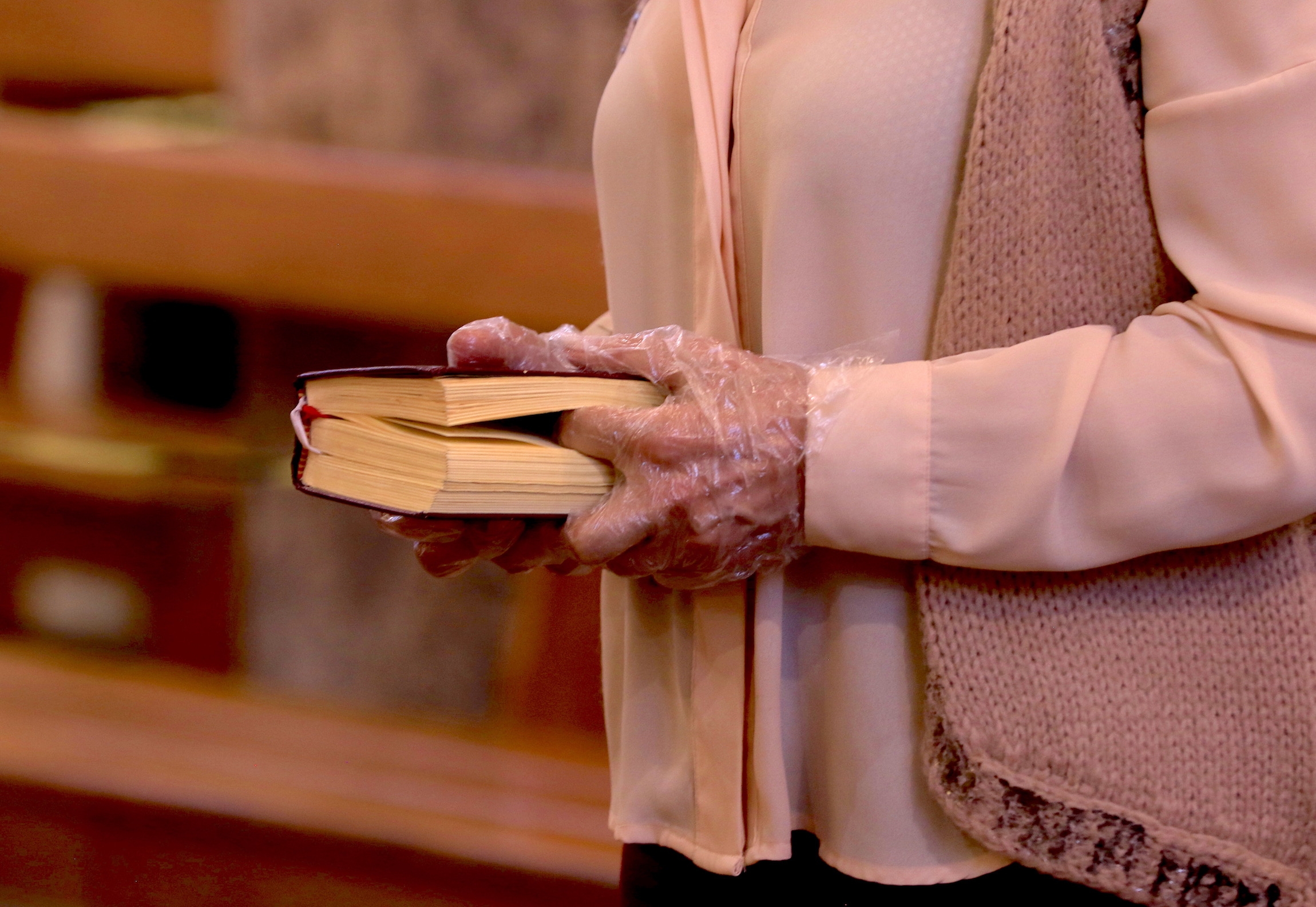
A woman clutches her Bible with gloved hands during the Sunday mass at St Joseph Maronite Catholic Church in Beirut.
The Covid-19 pandemic is the latest test of resiliance for Beirut. Prior to the virus outbreak, Lebanon was already facing its worst financial crisis in recent history, prompting anti-government protests that began last October and rattled the country’s hereditary political class. (MEE/Michal Kranz)
Middle East Eye delivers independent and unrivalled coverage and analysis of the Middle East, North Africa and beyond. To learn more about republishing this content and the associated fees, please fill out this form. More about MEE can be found here.




